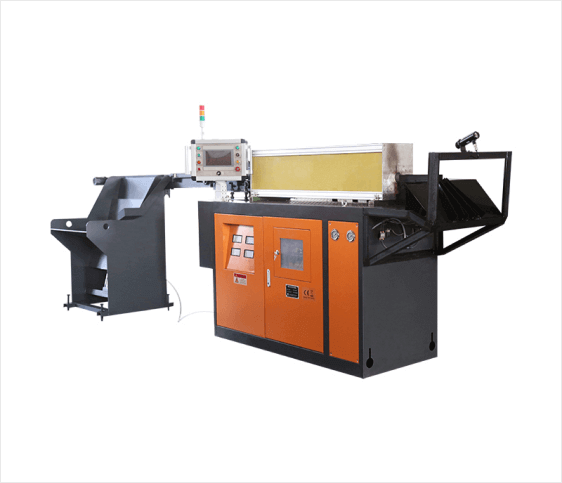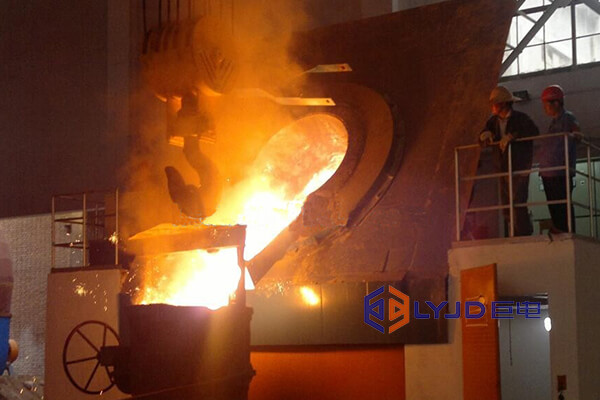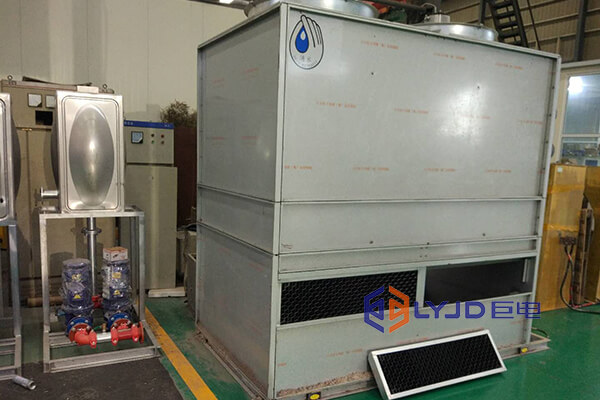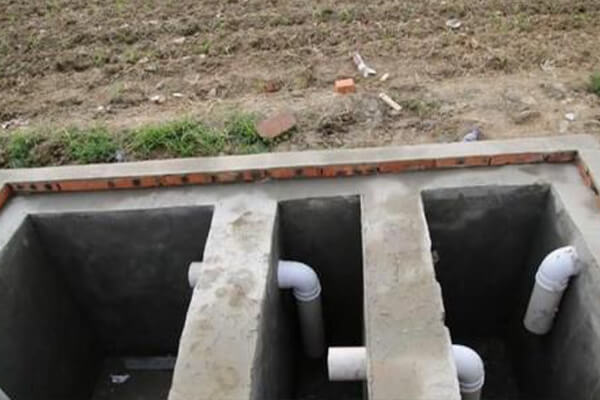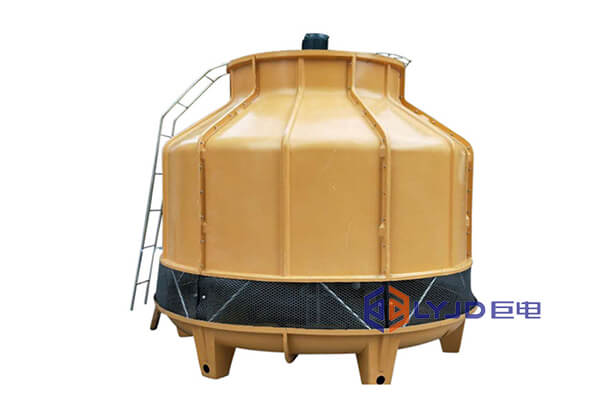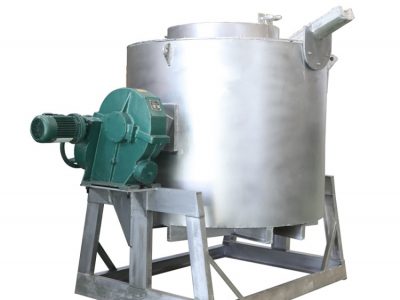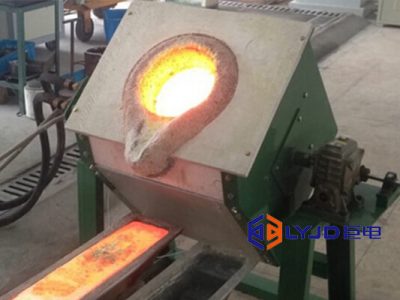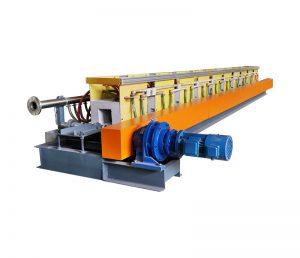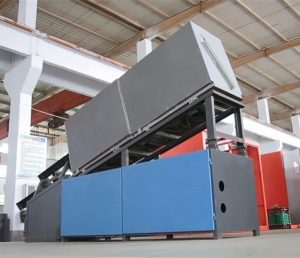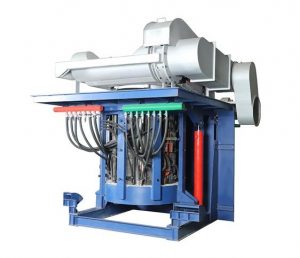The medium frequency melting furnace generates a large amount of heat during operation. How to cool it quickly and efficiently is crucial.
Cooling Methods of a Medium Frequency Melting Furnace
Here are 4 common cooling methods of a medium frequency melting furnace for your reference.
1. Water Cooling
Water is the most commonly used for cooling melting furnaces because of its good thermal conductivity and relatively low cost. This cooling systems usually include one or more coolers connected to the furnace through pipes. During the melting, heat is transferred to the cooling water through the furnace body. And then, the cooling water releases heat in the cooler and circulates back to the furnace body to continue cooling.
Internal cooling is usually suitable for high-temperature areas inside the furnace. While external cooling is used for cooling the outside of the furnace and the coke chamber. External cooling can be carried out by spraying to keep the temperature of the outer surface stable and avoid damaging the furnace.
2. Closed Cooling Tower
The closed cooling tower is an efficient cooling method that uses circulating water as the cooling medium. This system does not require an open pool, thus reducing water consumption and the risk of contamination. The closed cooling tower reduces the temperature through heat exchange between the air and the cooling medium. And then, the water circulates back to the intermediate frequency melting furnace.
Please note: Closed cooling towers have very high requirements on the quality of cooling water. The hardness of water used in closed cooling towers shall not exceed 8 degrees.
3. Cross Flow Cooling Tower
A crossflow cooling tower is a semi-closed cooling machine reducing water temperature through direct contact between air and spray water. Although the investment is relatively small, the cost is high when the medium frequency furnace is running. That's because it requires a large amount of water to maintain the cooling effect.
4. Plate Heat Exchanger
The plate heat exchanger is a compact and efficient heat exchange equipment, which is suitable for cooling medium frequency melting furnaces. Plate heat exchangers transfer heat from high-temperature fluid to low-temperature fluid through heat conduction between plates. It is used in conjunction with a water reservoir to provide a stable cooling effect with a relatively small investment.
Reservoir of Medium Frequency Melting Furnace
Except the closed cooling tower, several other cooling methods for a medium frequency melting furnace require the use of water reservoirs. The water reservoir is an important part of the cooling system of the medium frequency melting furnace. The water reservoir is mainly used to store and circulate cooling water to ensure a stable supply and recycling of cooling water.
The Role of The Reservoir
1. Storage of Cooling Water
The reservoir can store a sufficient amount of cooling water to meet the demand of the furnace during continuous operation.
2. Stable Water Supply
The water reservoir can ensure that the cooling water is supplied to the melting furnace under a stable pressure and water level to avoid water pressure fluctuations that affect the cooling effect.
3. Recycling
The reservoir also plays the role of recycling cooling water. The cooling water after heat exchange in the intermediate frequency melting furnace will flow back to the reservoir. And it will be recycled again after treatment such as sedimentation and filtration. Thus, it improves the utilization efficiency of water resources.
Key Points in the Design of Reservoirs
1. Capacity
The capacity of the reservoir should be determined based on the cooling needs of the intermediate frequency melting furnace and the design requirements of the cooling system to ensure that a sufficient amount of cooling water can be stored.
2. Water Quality Management
Since cooling water may be contaminated during use, the water quality in the reservoir needs to be regularly tested and managed to ensure that the water quality meets the cooling requirements.
3. Anti-corrosion Measures
Reservoirs are usually constructed of reinforced concrete or steel plates. To prevent the inner wall and bottom of the pool from being corroded, appropriate anti-corrosion measures need to be taken, such as painting with anti-corrosion paint.
4. Safety Measures
The reservoir should be equipped with safety guardrails and warning signs to prevent people from accidentally falling in. At the same time, the structural safety and usage status of the pool should also be checked regularly to ensure safe operation.
Maintenance And Management of Reservoirs
1. Regular Cleaning
Clean the reservoir regularly to remove sediment and impurities at the bottom of the pond to keep the water clean.
2. Replenish Water Source
According to the consumption of cooling water, replenish new water sources in time to ensure the stability of the water level in the reservoir.
3. Monitor Water Quality
Regularly monitor the water quality in the reservoir, including pH value, hardness, chloride ion content and other indicators, to ensure that the water quality meets the cooling requirements.
4. Maintenance Equipment
Regularly inspect and maintain the water inlet and outlet pipes, water pumps and other equipment of the reservoir to ensure their normal operation.
Cooling System Considerations
1. Cooling efficiency
The cooling system must be able to effectively reduce the operating temperature of the medium frequency melting furnace to ensure the normal operation of the equipment and extend its service life.
2. Cost-effectiveness
When choosing a cooling method, it is necessary to comprehensively consider the investment cost and operating cost and choose the most cost-effective solution.
3. Environmental protection
Some cooling methods may produce wastewater or exhaust gas, and it is necessary to ensure that these emissions comply with environmental protection requirements.
4. Maintainability
The cooling system should be easy to maintain and clean to ensure long-term stability.
5. Safety
The cooling system should be designed properly to avoid potential safety hazards, such as leaks, explosions, etc.
In Summary
The cooling method of the medium frequency melting furnace needs to be selected and optimized according to the actual situation. At the same time, factors such as efficiency, cost, environmental protection, maintainability, and safety of the cooling system also need to be considered. The stable operation and efficient production of the industrial melting furnaces can be ensured through reasonable cooling design and management.
